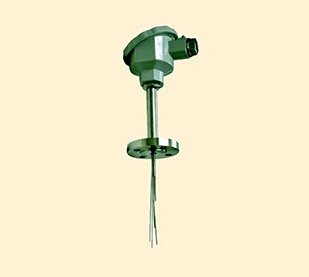
Working Principle
The multipoint thermocouple operates based on the Seebeck effect, just like a standard thermocouple. However, unlike conventional designs, it integrates multiple thermocouple junctions within a single probe or assembly. Each sensing point is positioned at a different location along the length of the probe, allowing simultaneous temperature readings from various depths or sections of a process.
These individual signals are typically routed through independent circuits, ensuring precise, real-time, multi-zone temperature monitoring.
Applications
Multipoint thermocouples are essential in industrial processes where temperature gradients occur across space or depth. They are widely used in:
- Petrochemical reactors (e.g., fixed-bed and fluidized-bed reactors)
- Large storage tanks (to monitor temperature stratification in liquids or gases)
- Grain silos (for detecting hotspots and preventing spontaneous combustion)
- Industrial furnaces and kilns
- Power plant boilers
- Cryogenic and high-temperature process control
This type of thermocouple enhances process safety, efficiency, and quality control by providing comprehensive thermal mapping.
Construction & Materials
- Protective Sheath
- Materials:
- Stainless steel (304, 316L) for general-purpose use
- Inconel 600/625 for high-temperature and corrosion-resistant applications
- Ceramic sheaths for extreme temperature or aggressive chemical environments
- Designed for robust mechanical strength and long-term stability.
- Materials:
- Thermocouple Elements
- Types: K, J, N, E, T, or customized according to application needs
- Multiple sensing points are spaced as specified (e.g., at 0.5m or 1m intervals)
- Insulated using high-purity ceramic insulators or mineral-insulated (MI) cables.
- Head / Connection Box
- Configured with individual terminals or integrated multiplexer modules for transmitting multiple signals.
- Available in waterproof, explosion-proof, or weatherproof housings.
- Optional Accessories
- Signal transmitters (4–20 mA output)
- Thermal wells for removable installation
- Flanges or threaded fittings for fixed mounting
Technical Advantages
- High-density temperature data from a single probe
- Space-saving design, replacing the need for multiple individual sensors
- Enhanced process insight, enabling predictive maintenance and better control
- Long service life even in demanding thermal or chemical environments
- Customizable configuration to suit different industry-specific needs
